Glue Rupper Bellow
On the Louise drive shafts, I noticed greasy rupperbellows.
There were small “holes’ on both sides – maybe a marten was visiting – or the material is simply outdated.
A trial with the bycicle repair kit / fulcanizing clue may have lasted a month (the fat has dissolved the glue)
At Peter Hefti AG I was recommended the Loctite 406 and, in fact – it’s quite simple and lasts 🙂
Just cleaning and degreasing with nitro thinner, apply Loctite and squeeze it 20 seconds – done
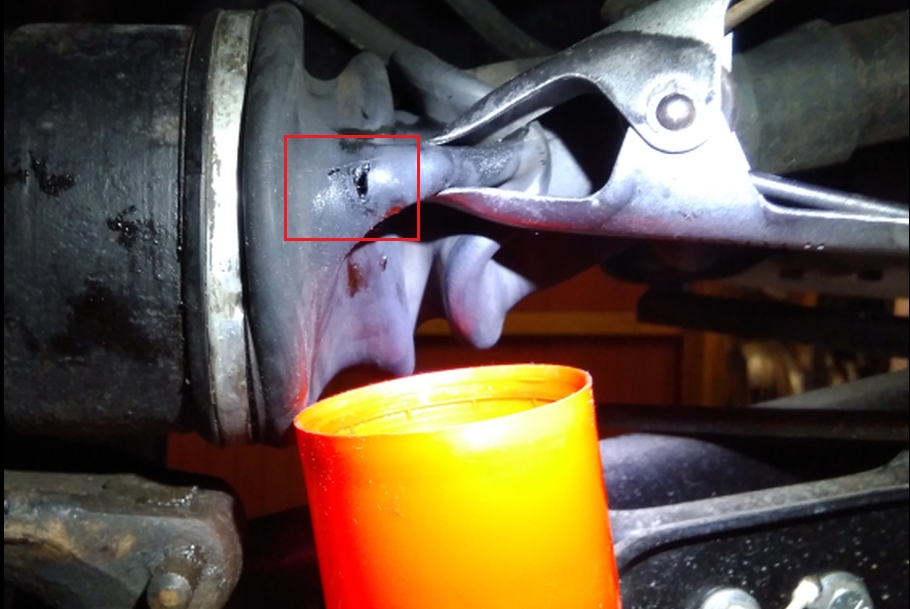
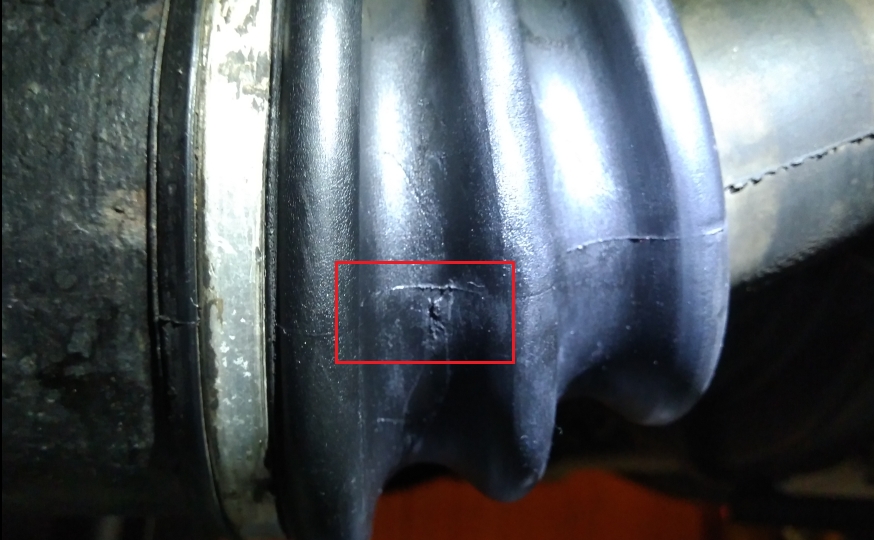
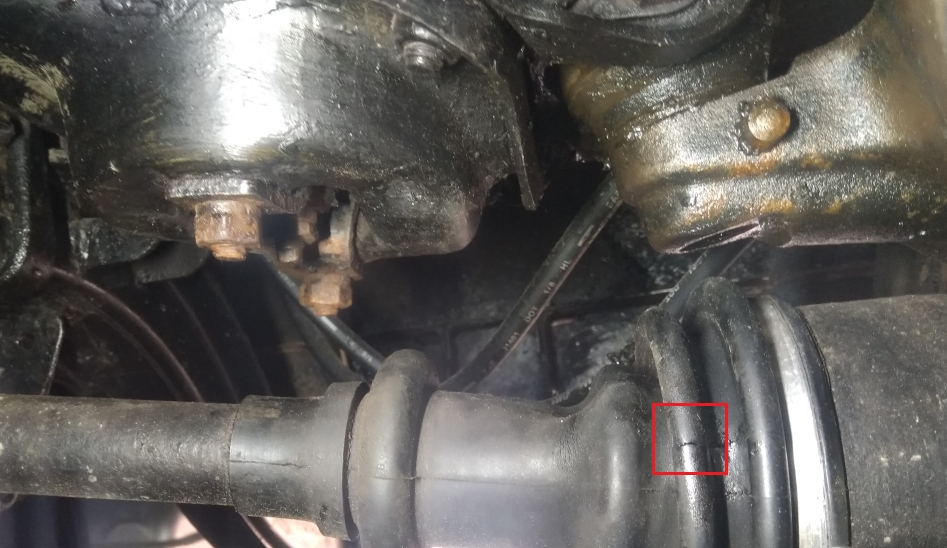
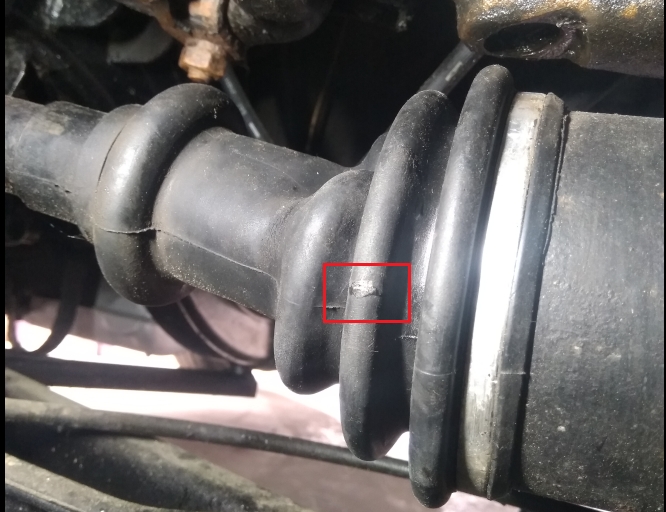
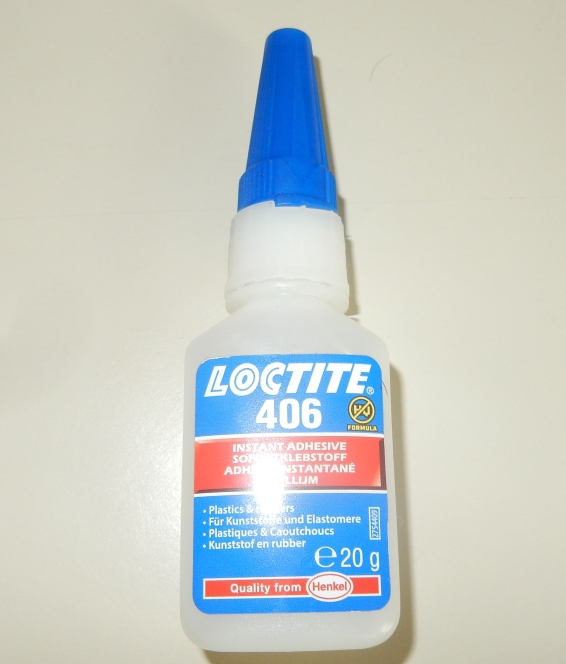
Fuelpump
In such old vehicles, the fuel pump usually does not generate enough vacuum / pressure – often it is also deformed at the mounting surface and it can leak engine oil.
A club colleague has left to me a number of defective Estafette fuel pumps. All have a cracky membranes and leaky platelet valves (under-pressure/over-pressure chamber). somme have so badly deformed the mounting surfaces – you can hardly believe it.
I got exactly one working pump out of the selected best parts.
Deformations
All the old pumps had more or less severe deformations –
i measured up to 0.4mm.
Presumably, the aluminum alloy of the injection molding housing is not able to completely withstand the pumping forces (spring) over time and the sealing surface is bombed (arched).
Very often you see oil leaks at the petrol pumps connection
This can be easily corrected with the metal-file.
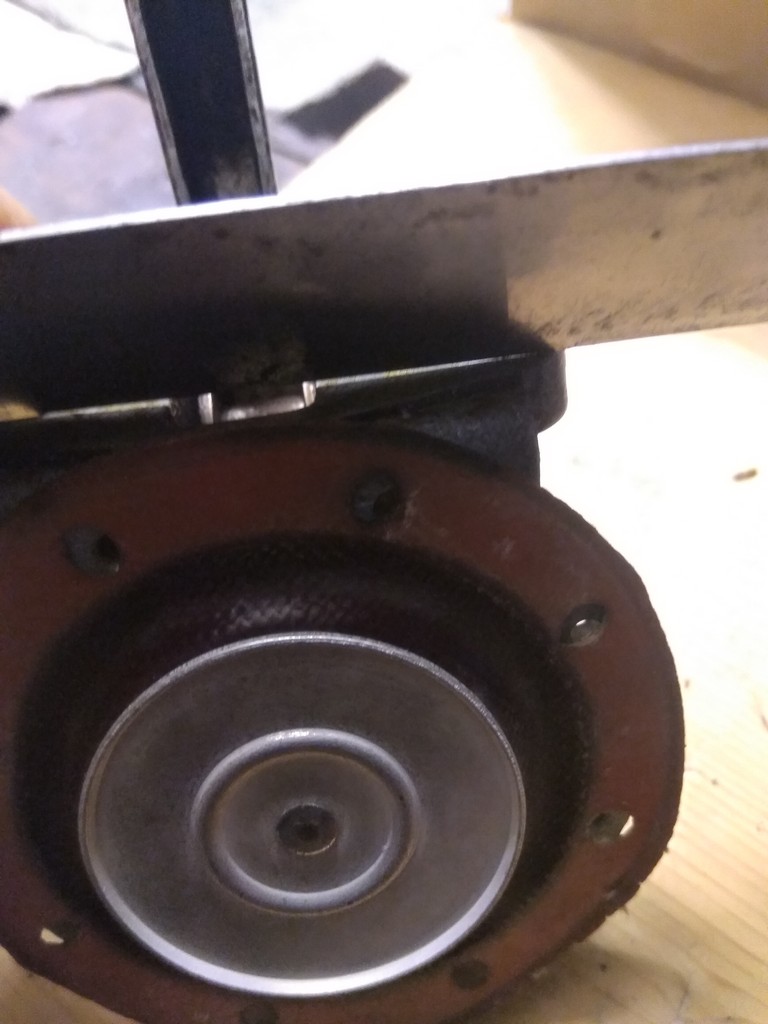
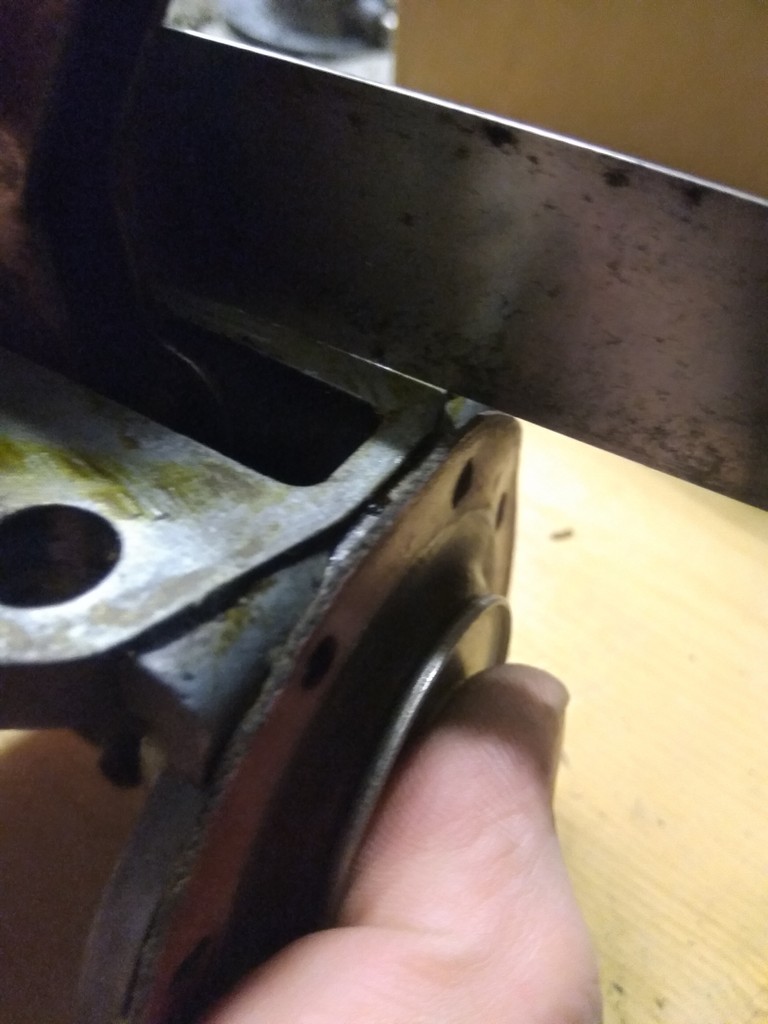

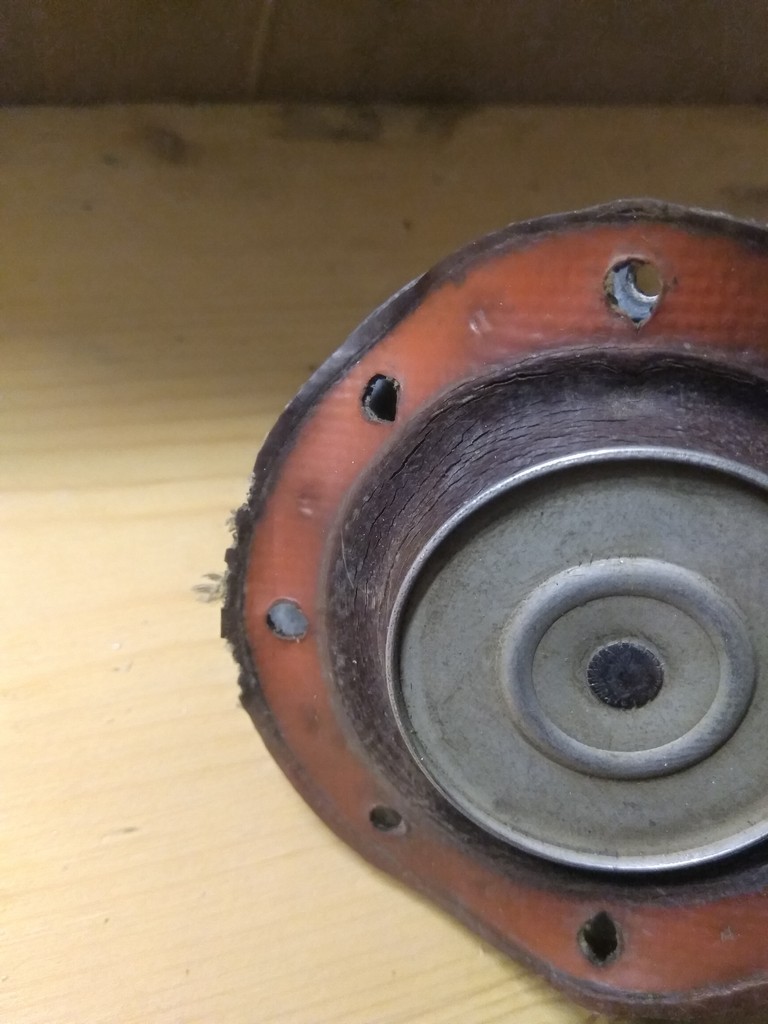

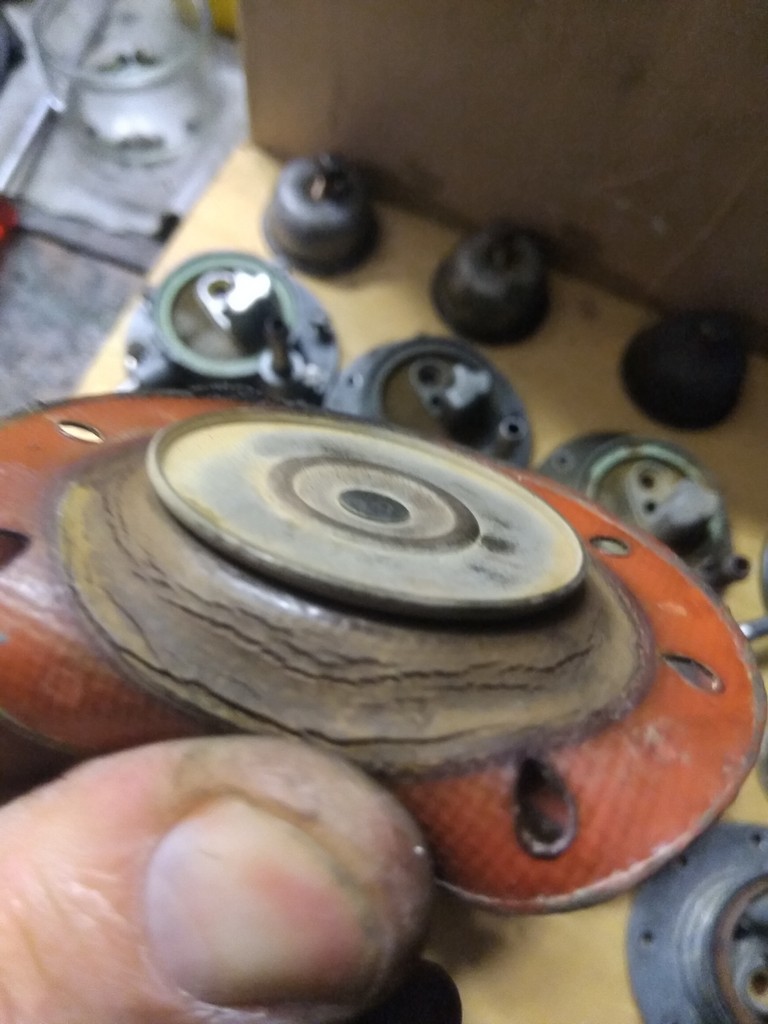
Find a new Pump
Getting a suitable new pump isn’t that simple. In the Estafette the steering bar is very close to the pump.
Not all pumps fit.
In my couchette, the distance (hight) from mounting bores up to the steering bar is about 80mm. In the horizontal – mounting surface to the steering barits in the minimum about 40mm.
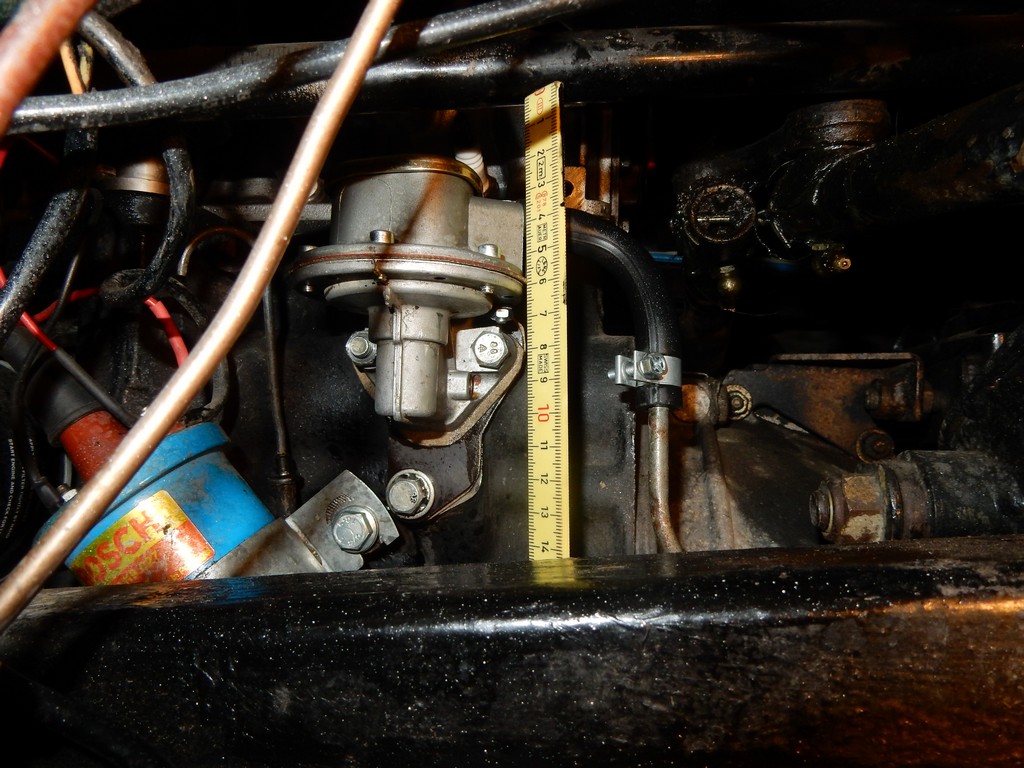
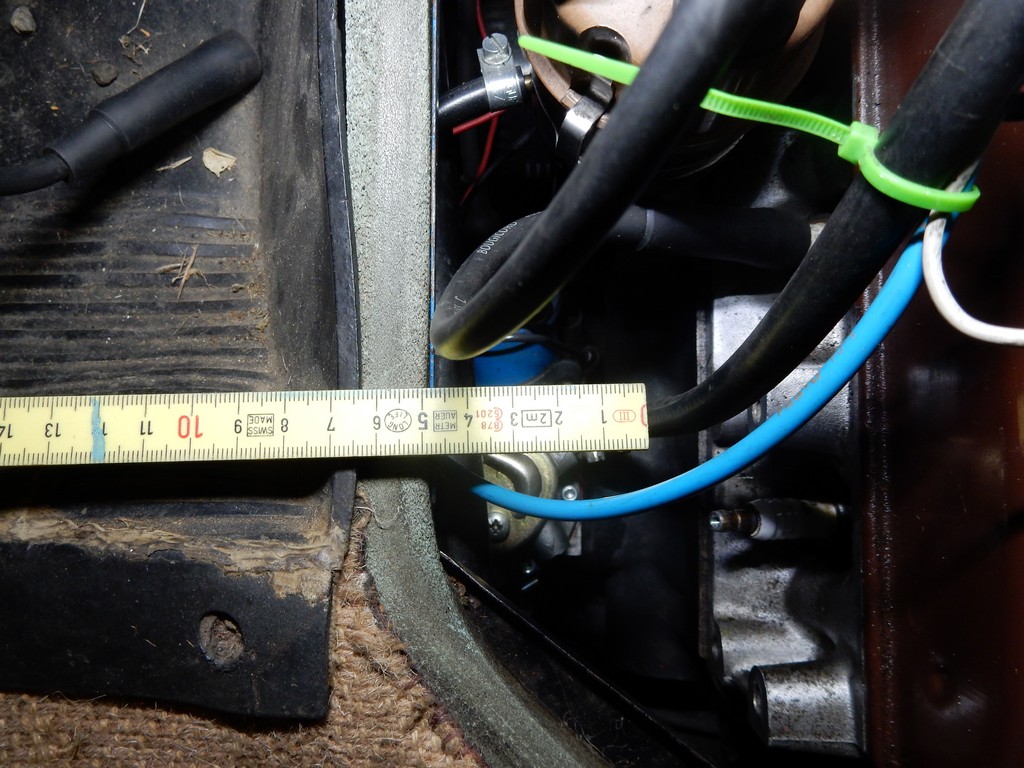
I compared following pumps
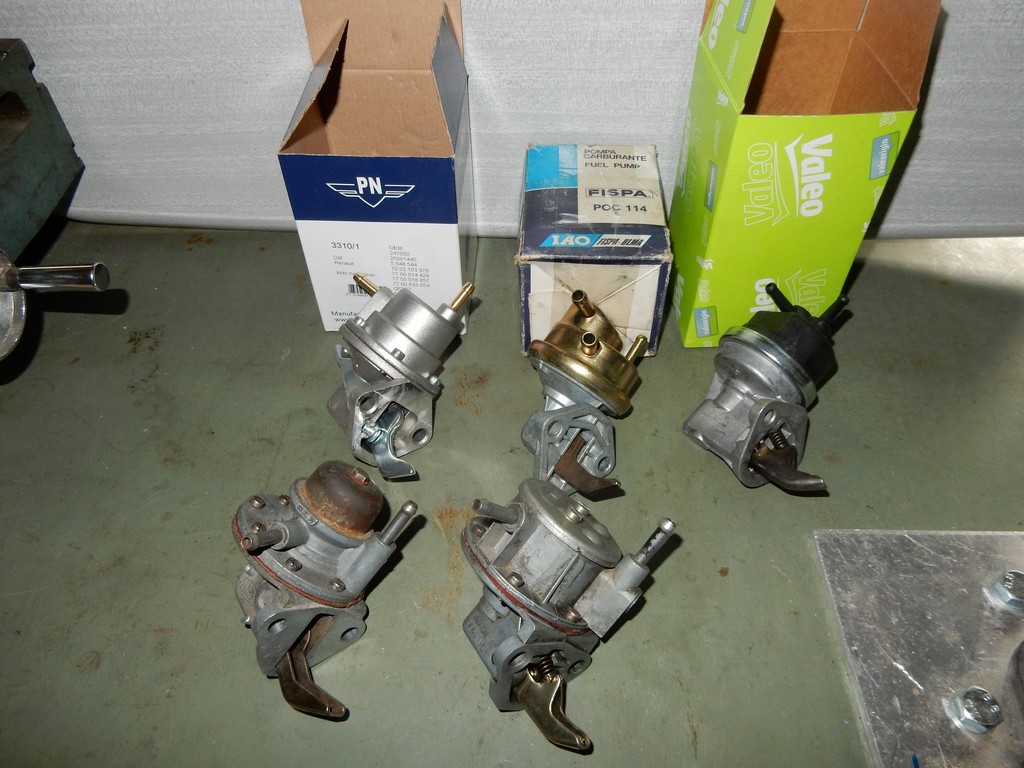
SEV
No longer available
The distance (hight) from the rupper hose connection to the mounting holes is 63mm
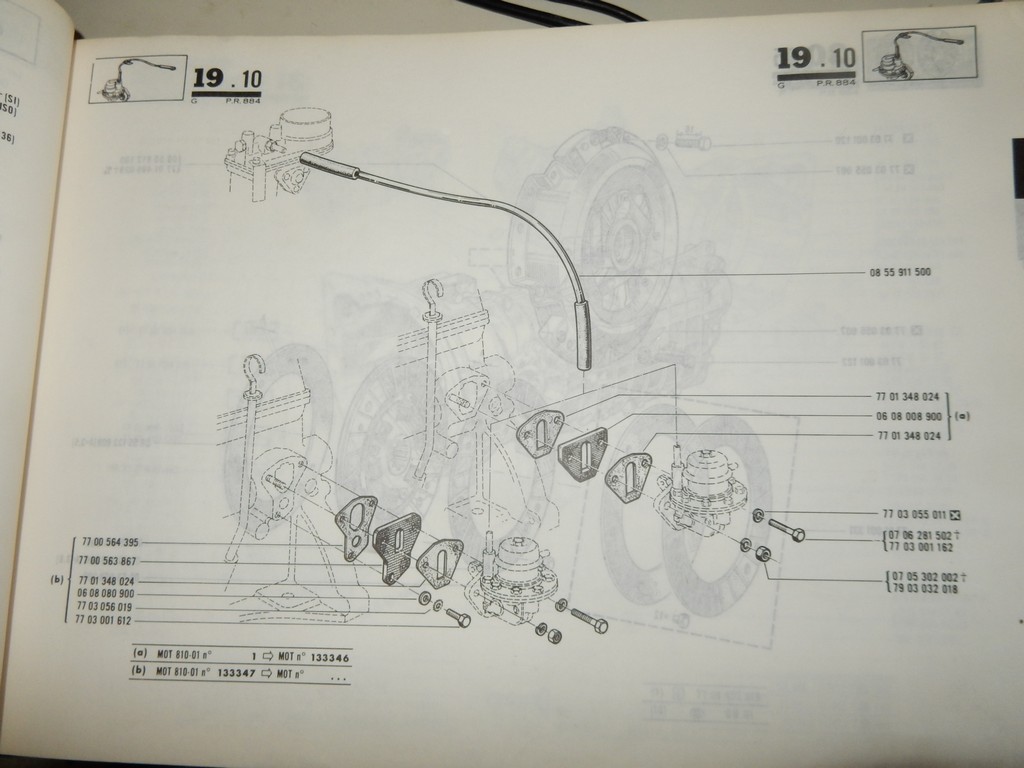
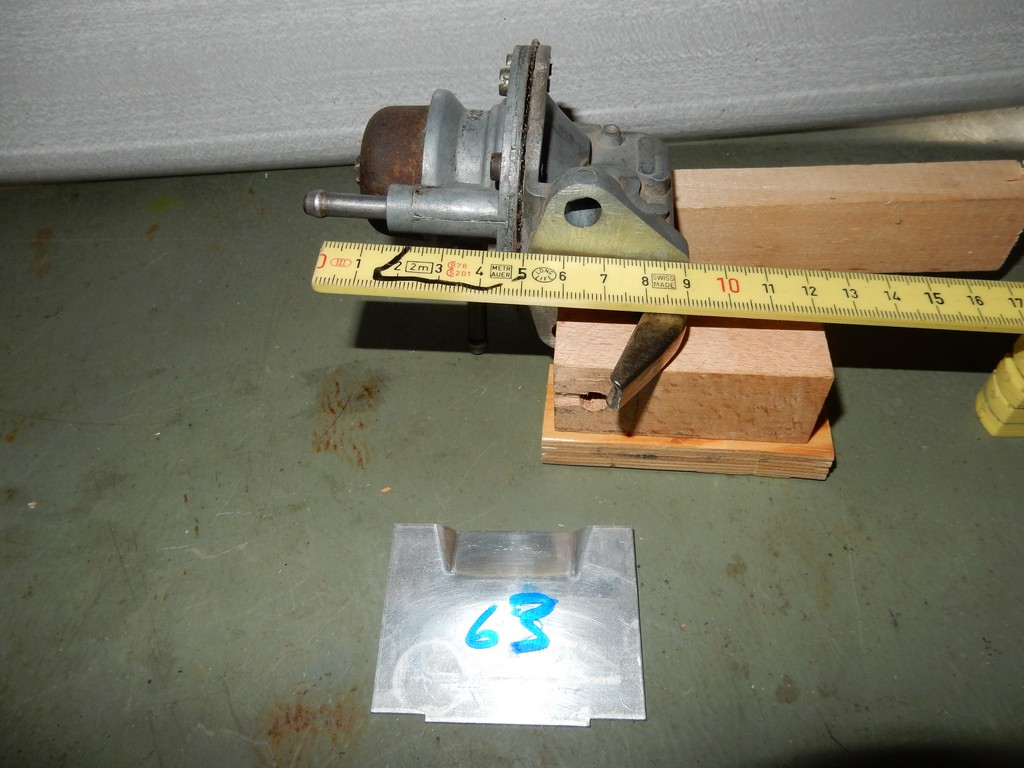
SOFABEX 1007
Would be the perfect pump – sometimes found as NOS on ebay (very rare). It has all the dimensions perfect and the hose connections are very ok. The distance (hight) from the rupper hose connection to the mounting holes is 58mm
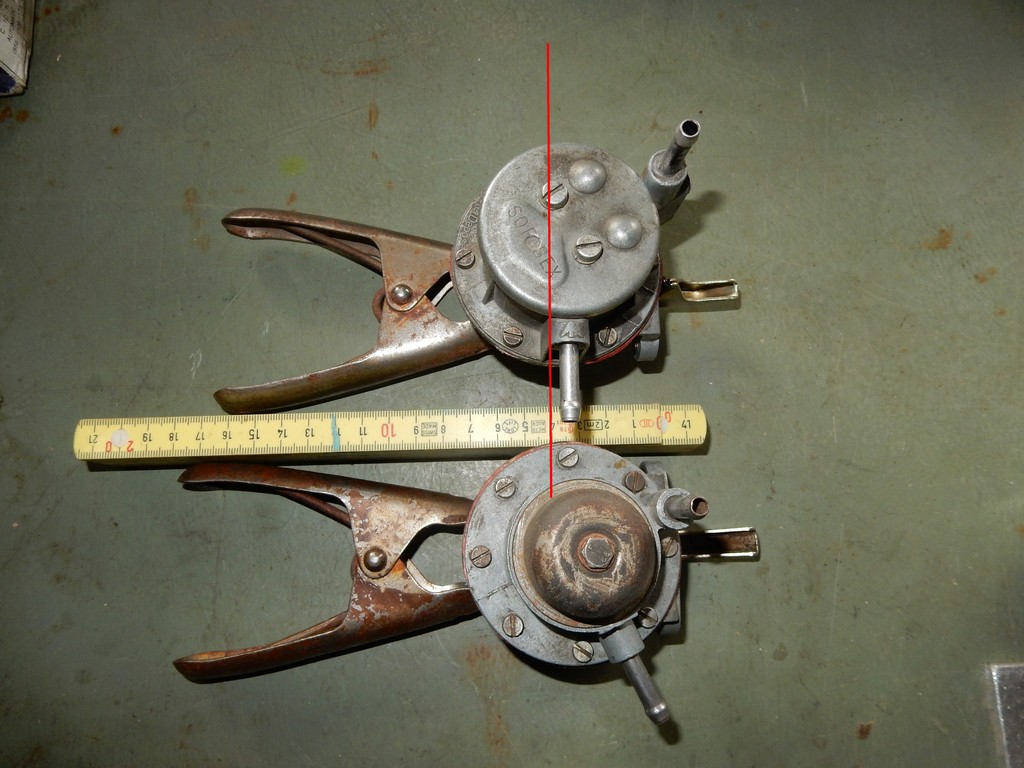

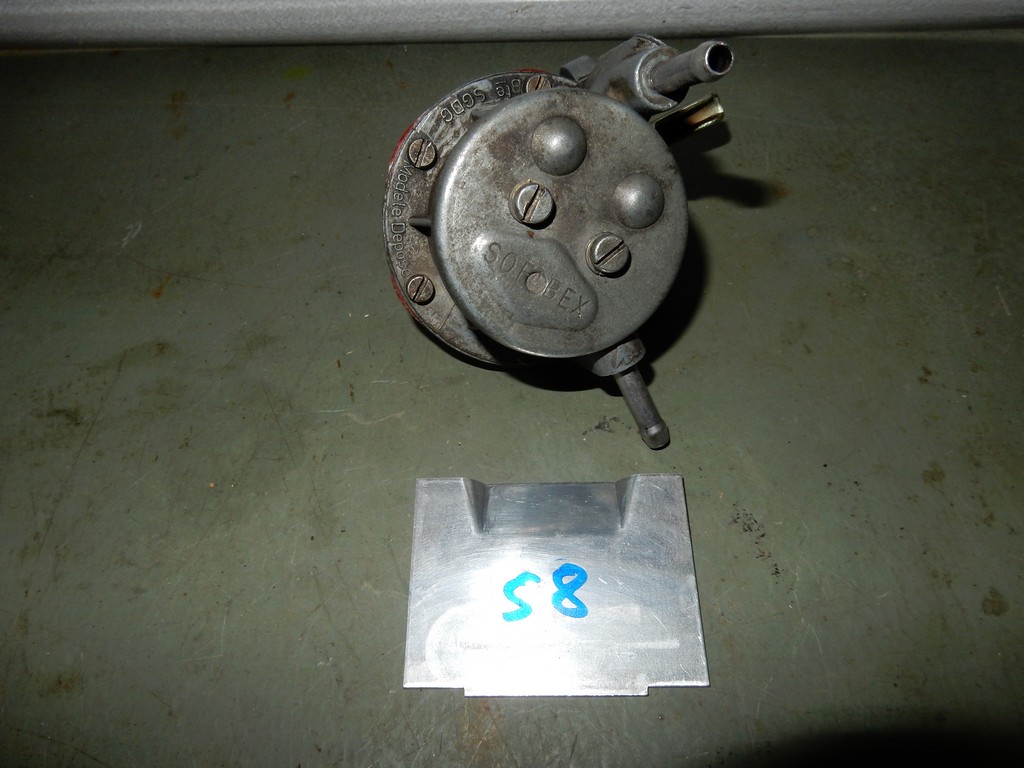
Valeo 247077 (SOFABEX)
Very cheap and supposedly suitable for Estafette – but not true!
Bought one on ebay.de – the pump is a bit too high and the steering bar collides with the inlet hose connection which is on the top of the membran cover (a shame – it has very good vacuum values). The distance of carburetor connection surface to the top is > 80mm.

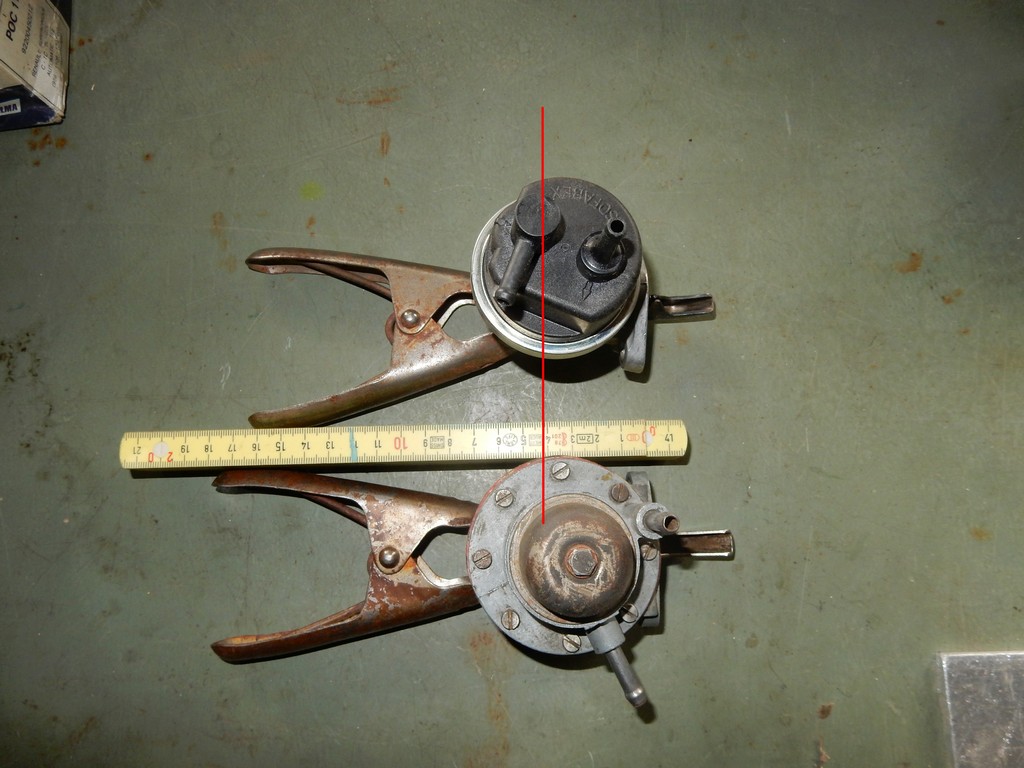
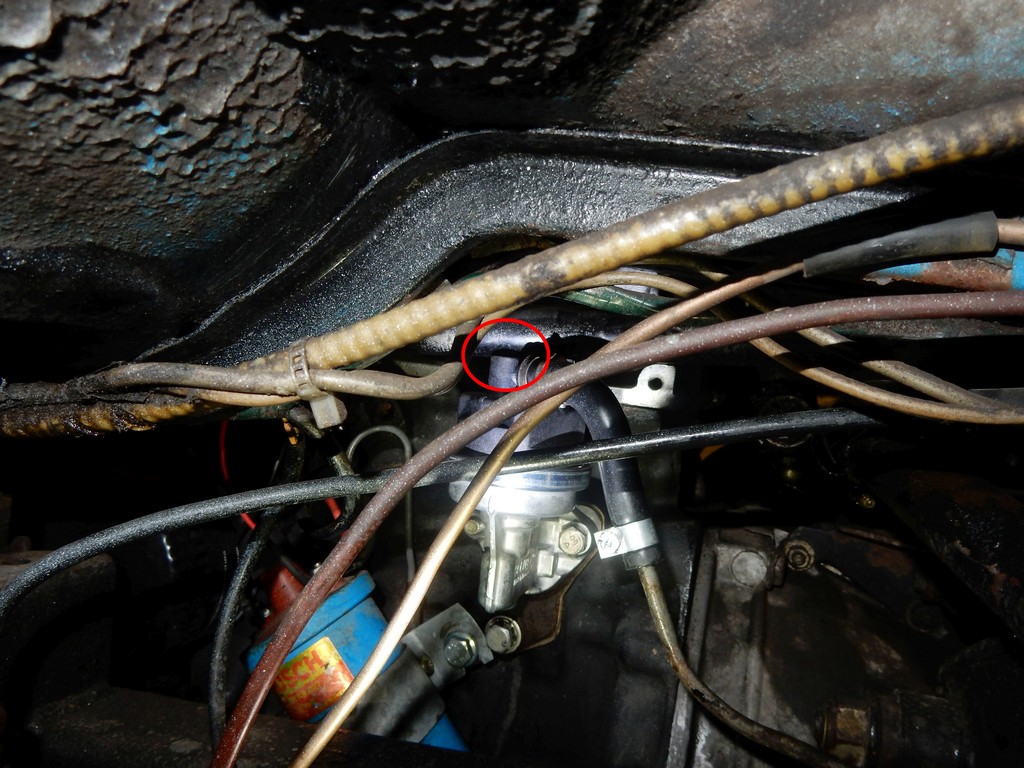
FISPA POC 114
The pump could fit it has just a distance (hight) from the rupper hose connection to the mounting holes of 75mm – the pump has 8mm rupper hose connections. So it needs a bit handycraft.
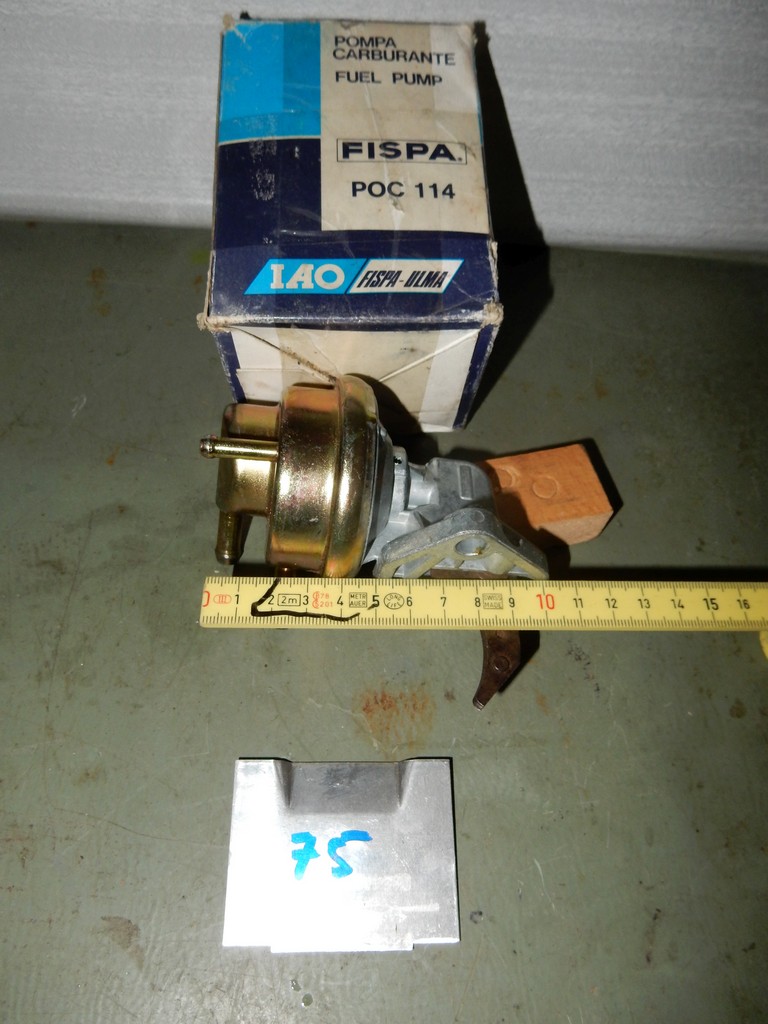
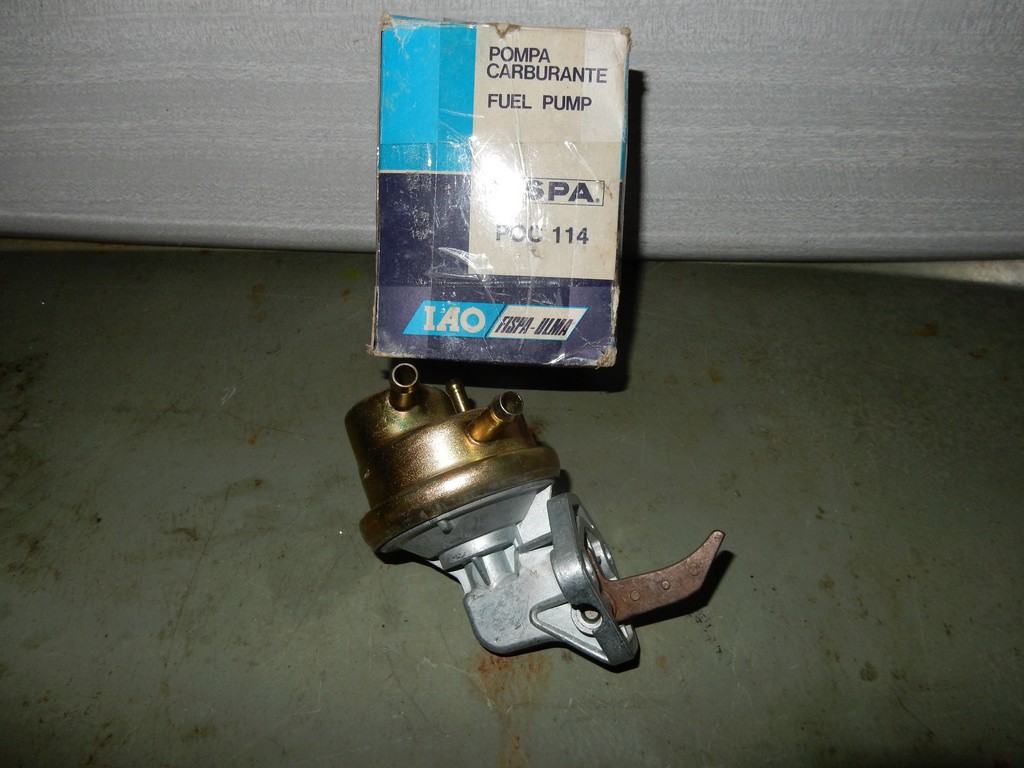
PTZ / Slovenia
Model PN 3310/1 – it builds very low and in the original setup it does not come into contact with the steering bar.
The top cover is made of metal and removable. This allows you to adjust the inlet hose connection to an angle as we have on the original pompe. Unfortunately, then the distance from the outlet hose connection to the steering bar is very narrow.
In the original setup it’s a good alternative, the fuel tube just needs to be bent a little bit
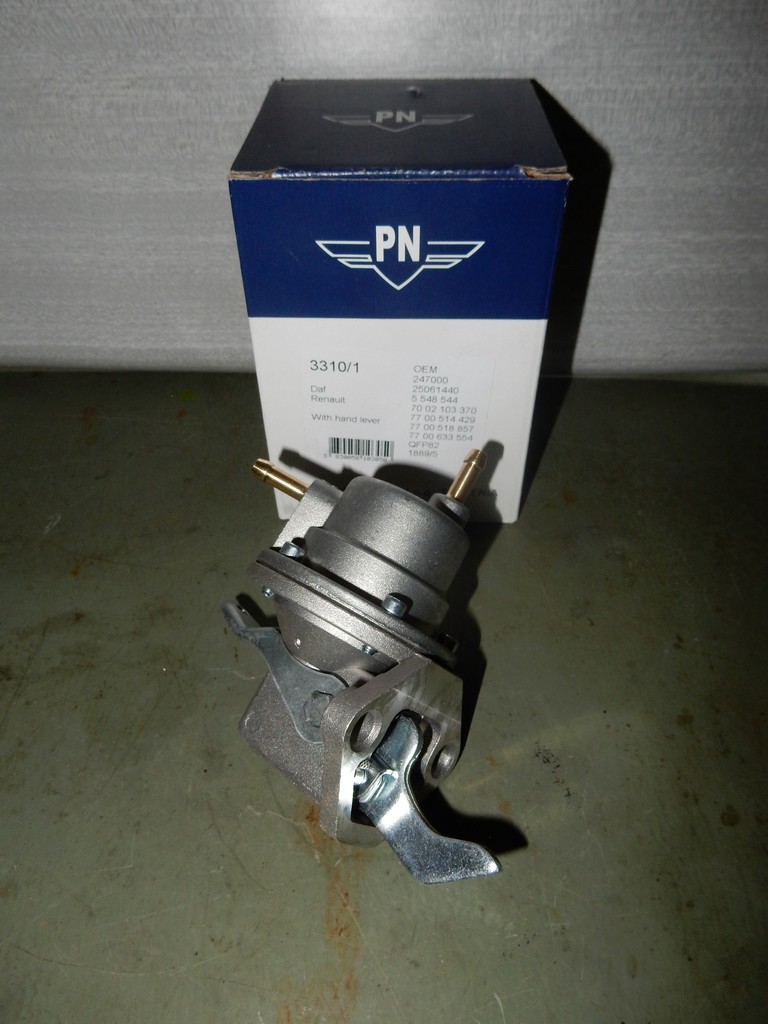

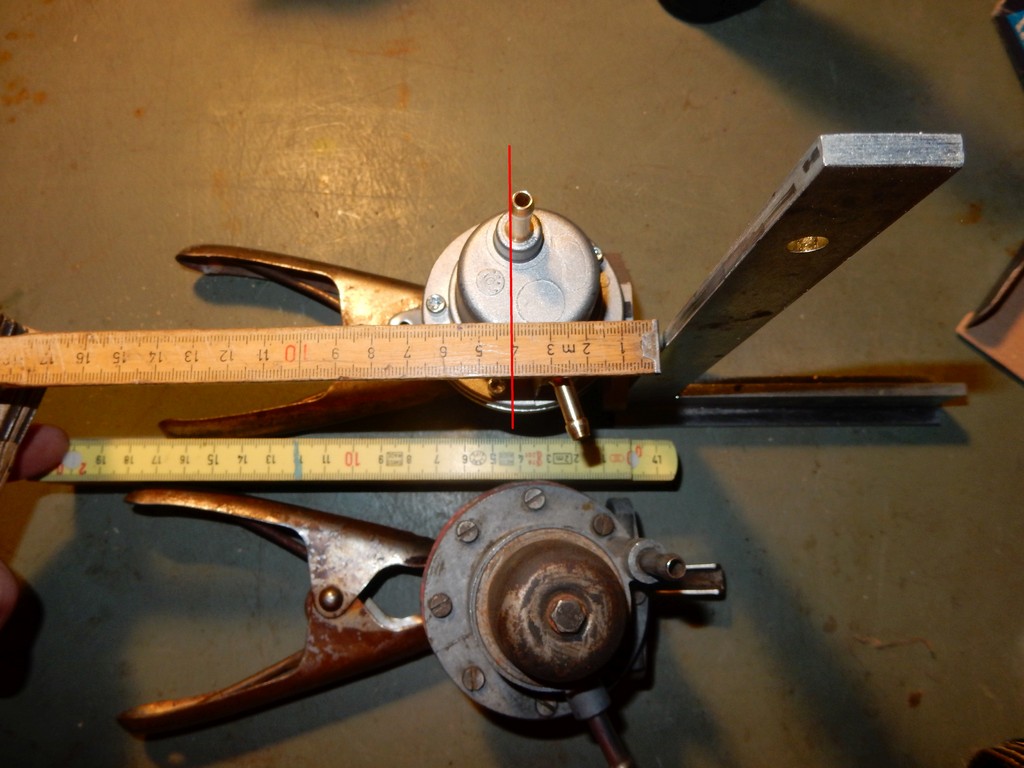
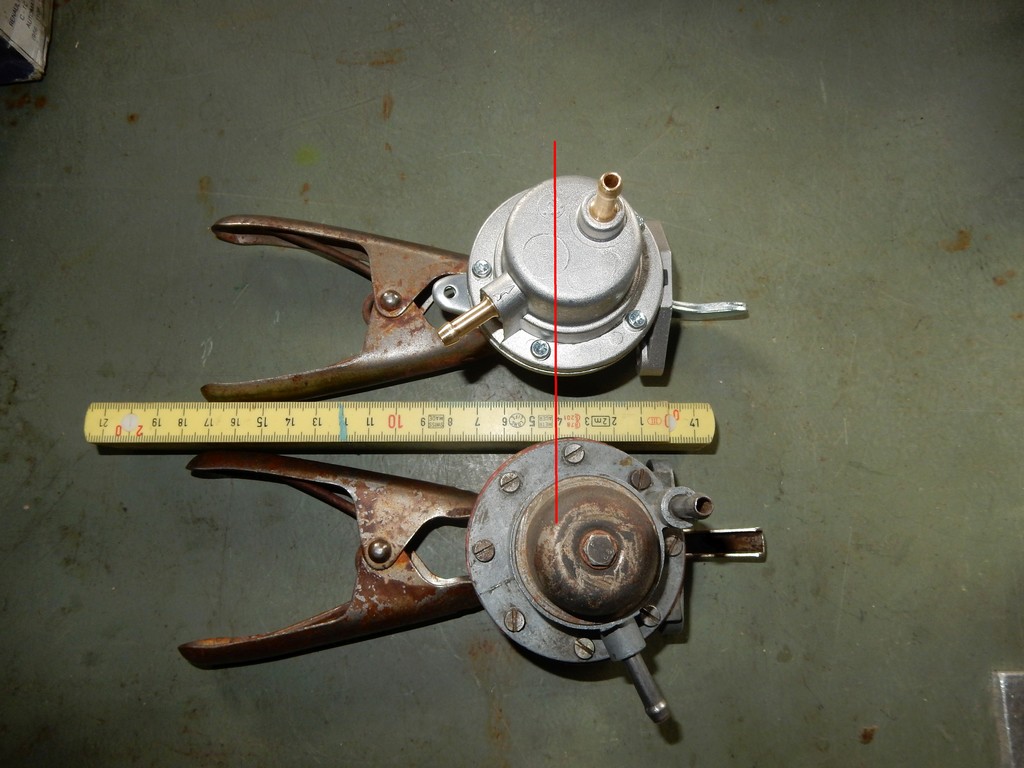
Vacuum Values
All new pumps have vacuum values of about 0.4 – 0.5 bar and held this value over a long time.
Under the old pumps there were those which did not build up any more vacuum pressure (membrane / sealing plates) and those which reached approx. -0.3 bar but could not held the negative pressure.
Experimentally, I mounted a pump with -0.3 bar and holding time about 5 seconds in the relay – the pumping power was still sufficient !
The plate valves can also be tested with an electric vacuum pump – What the limit values would be I cannot say.
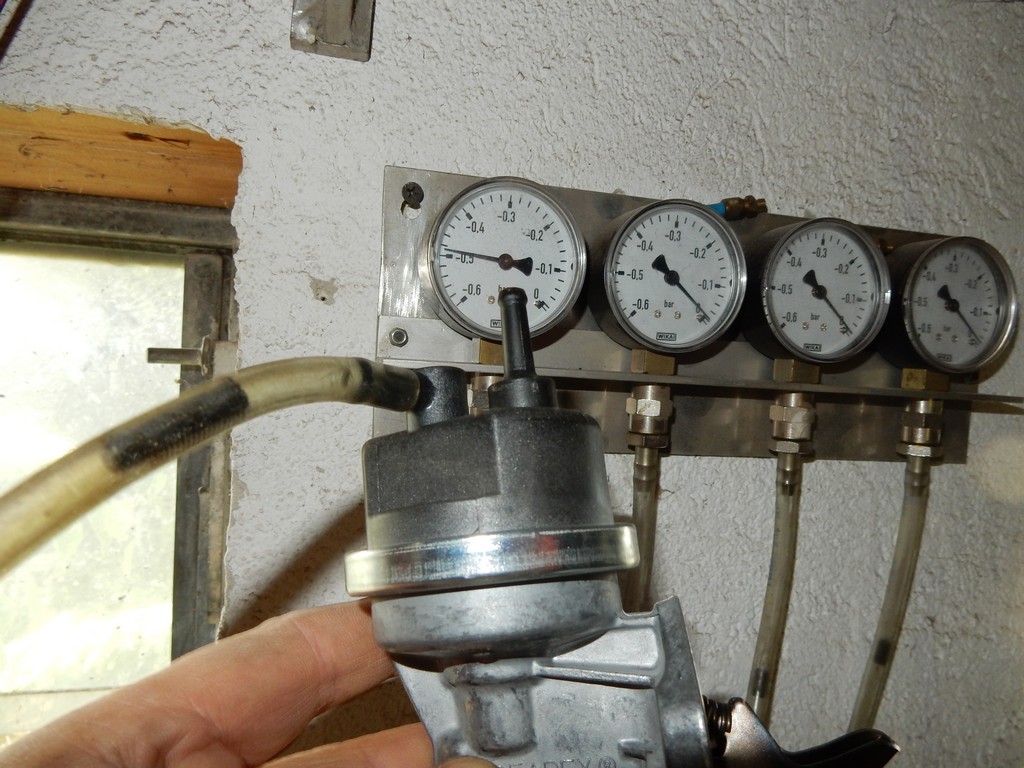
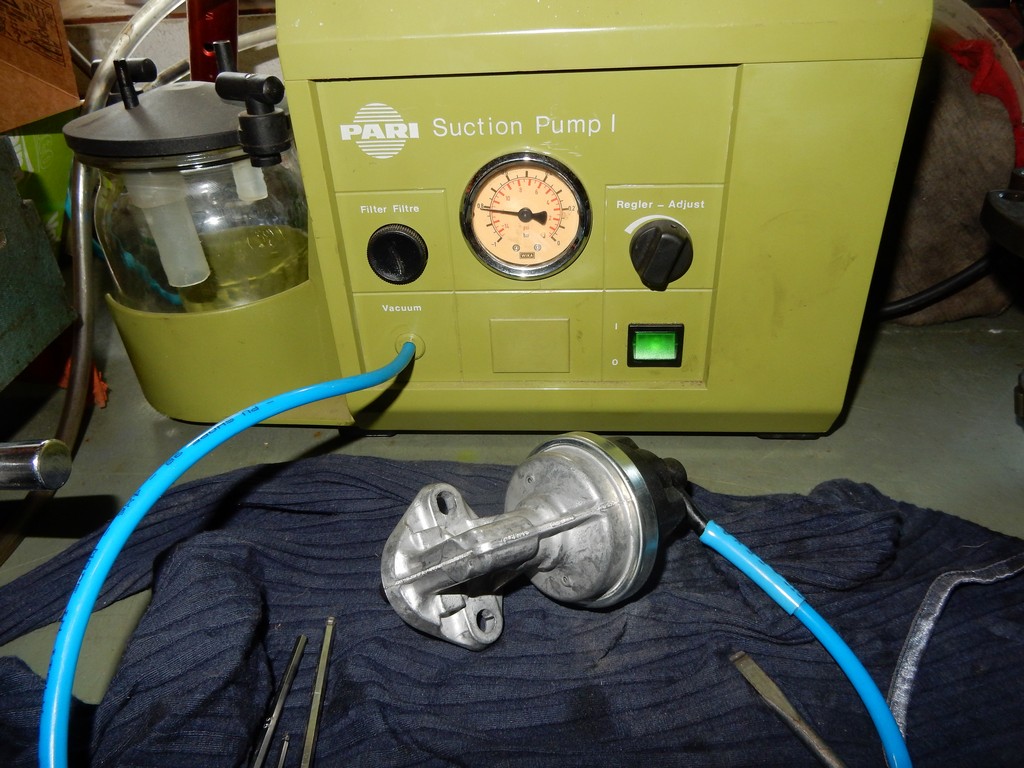
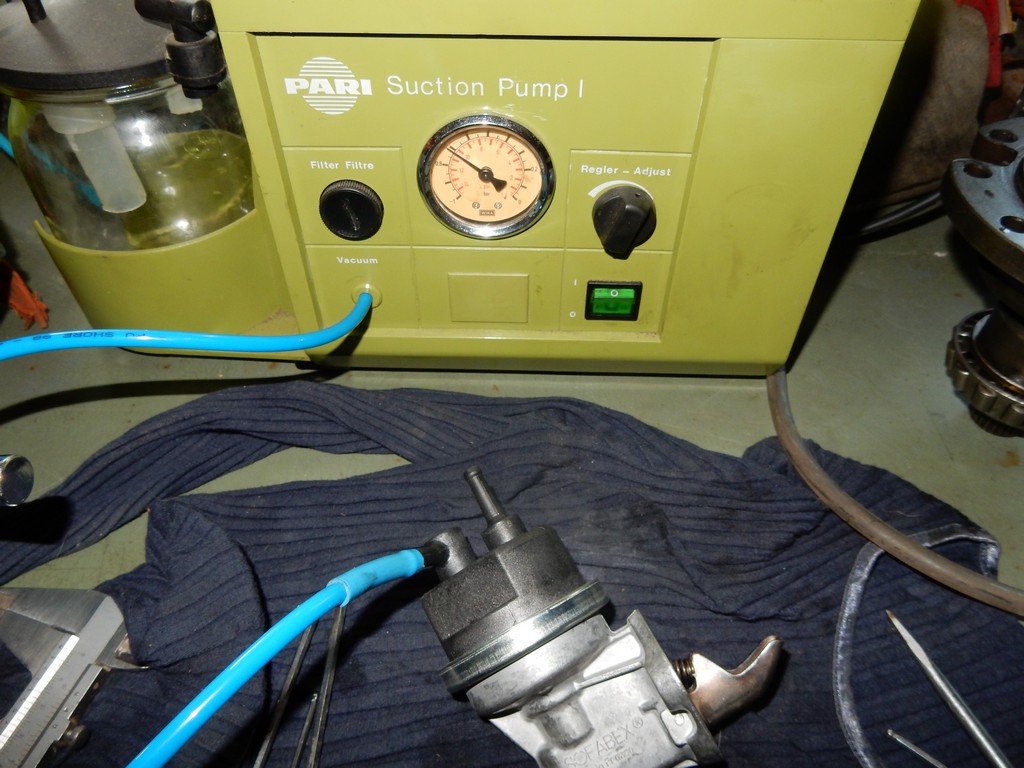
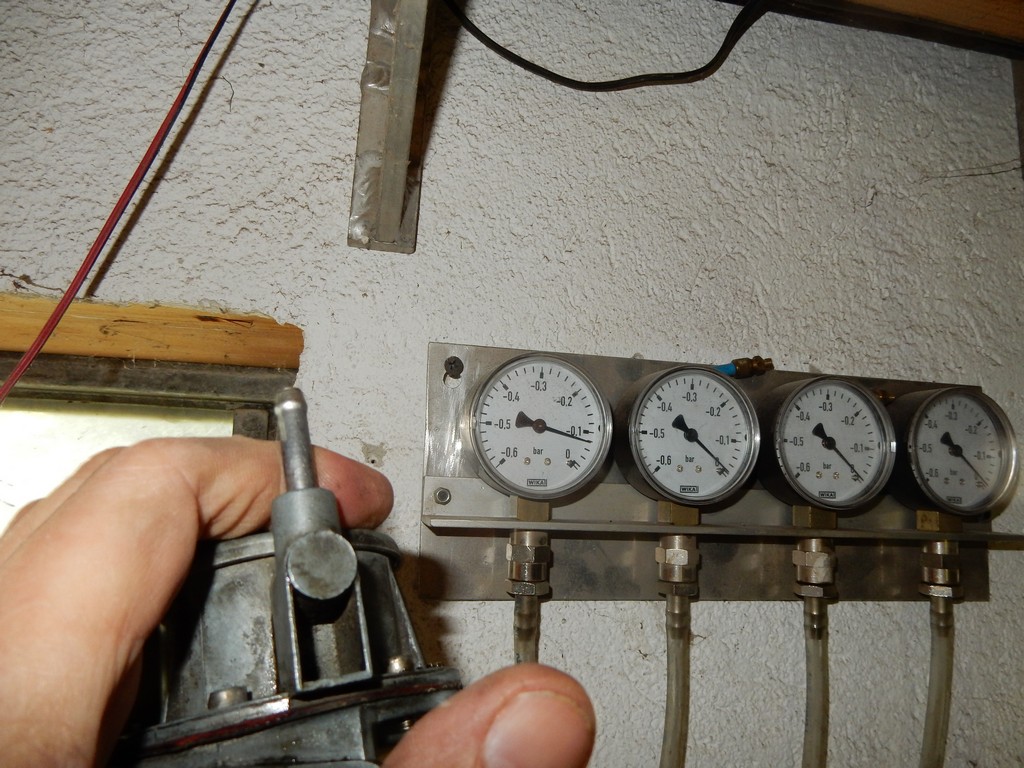
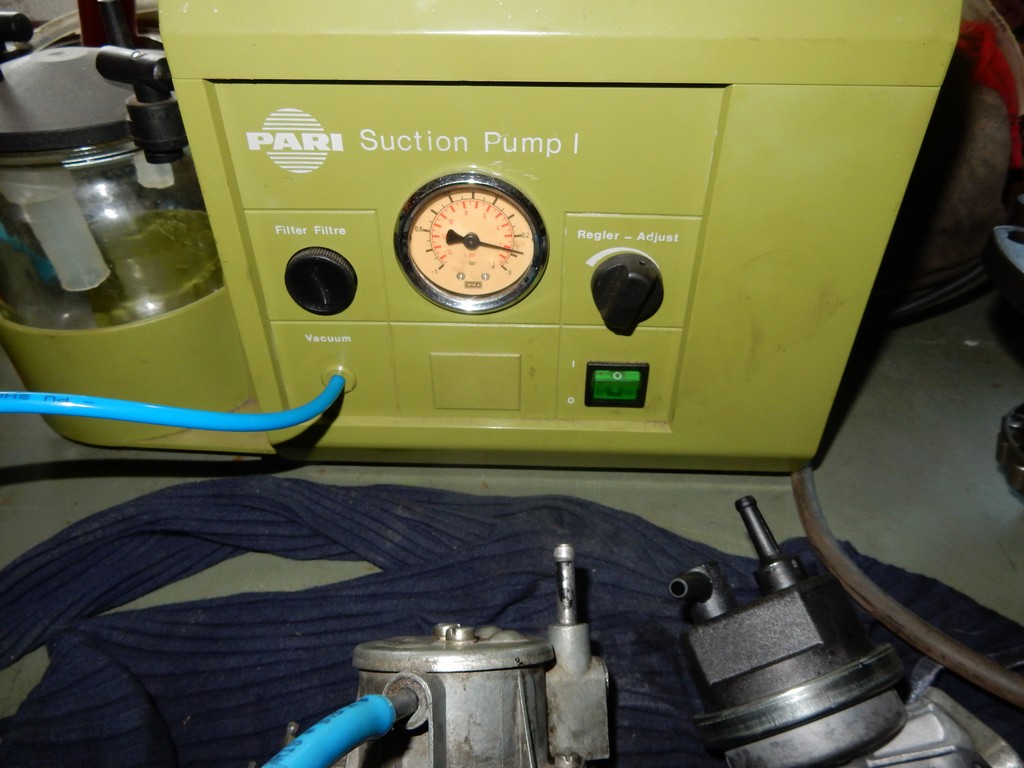
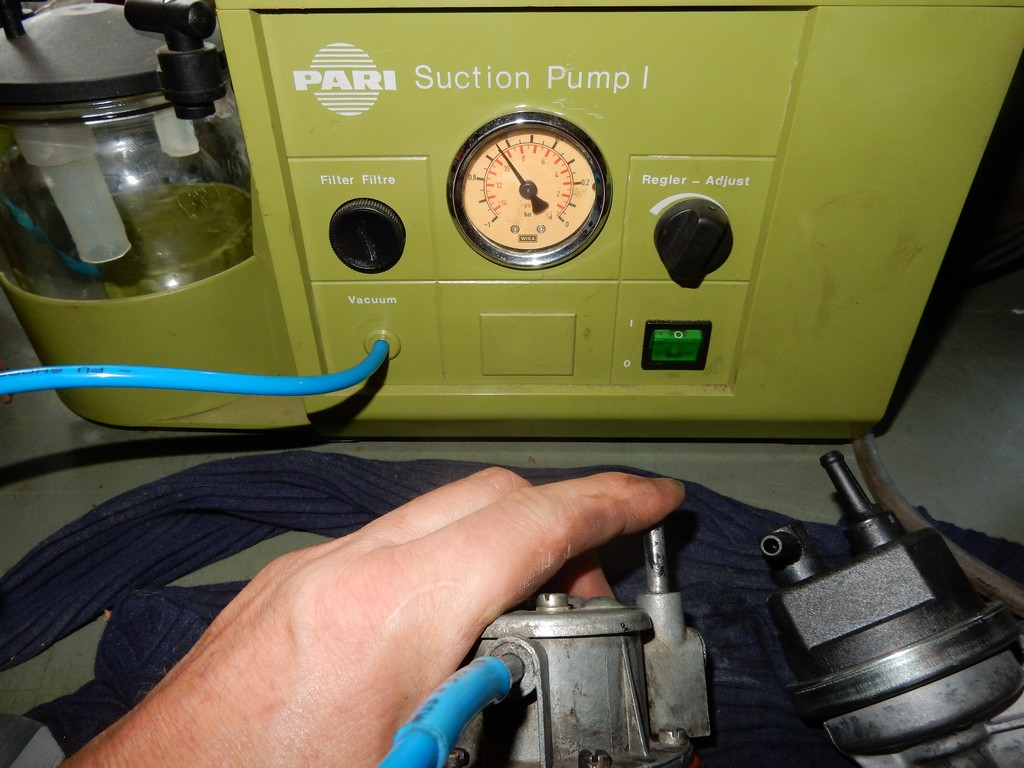
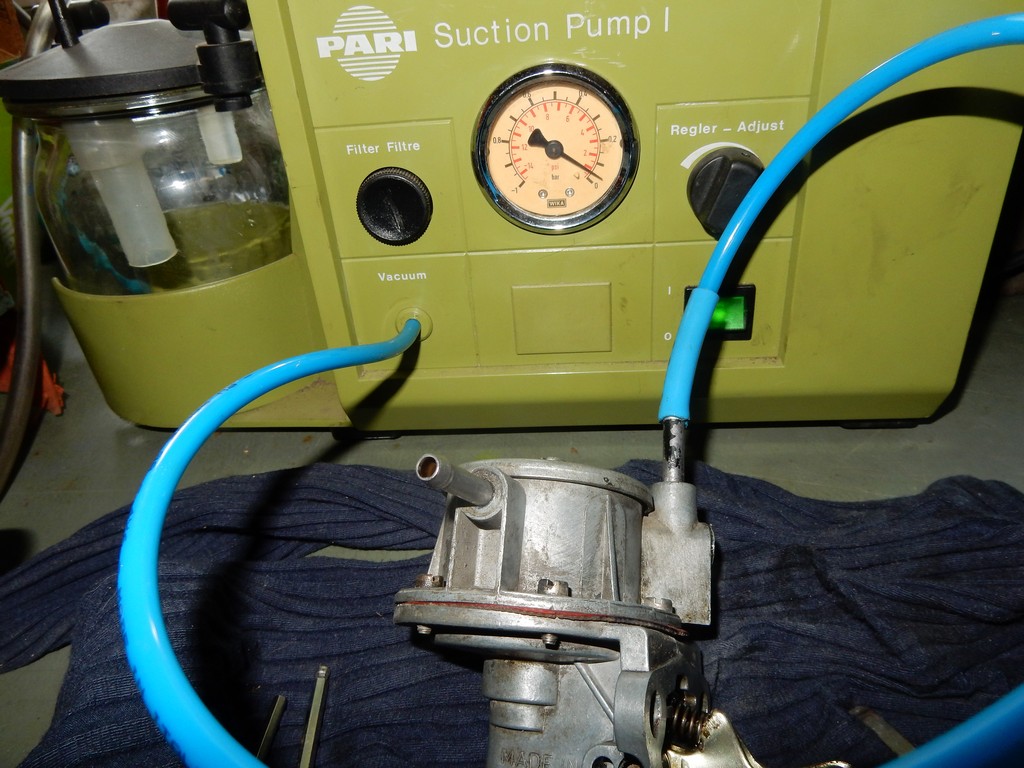
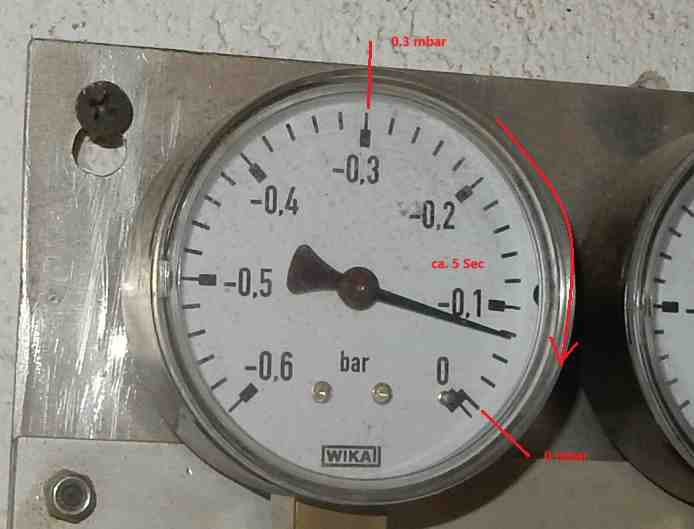
Pump with mounting warranty?
At “der Franzose de” there is an “own brand pump” available for the Estafette – as well they have a repair kit for the old SEV pumps. The repair kit is almost not worth it compared to prize of a new pump ( a pity)
The private brand pump seems to me to be a Slovenian PN 3310/1:
https://www.franzose.de/de/Renault/Estafette/Kraftstoffanlage-Zeboehoer/
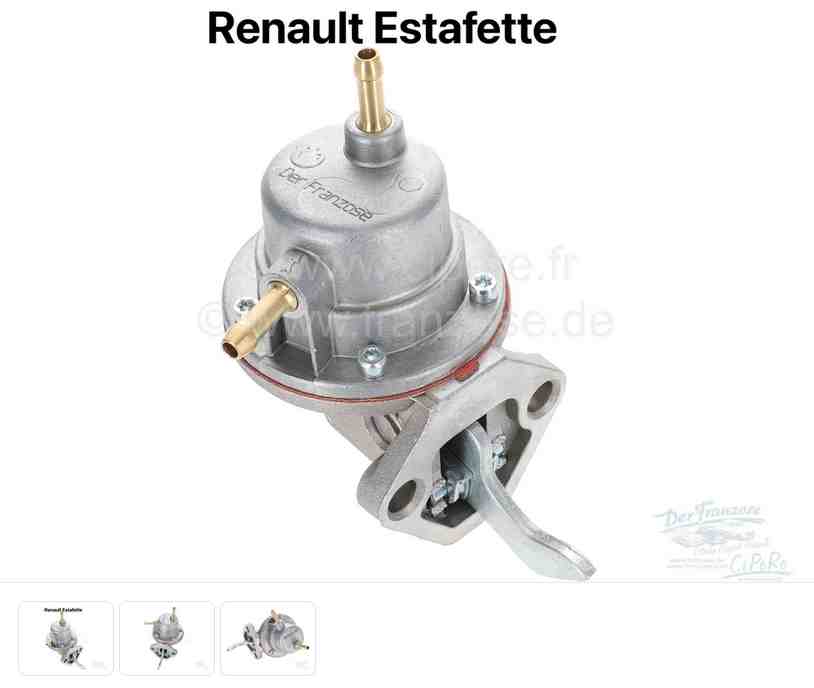
Vehicule Ancien also has an “own brand” – from the shape it seems to be a Meat & Doria: https://vehicules-anciens.fr/fr/shop/pompe-%C3%A0-essence-estafetteva1901-1398190206085114210909173923
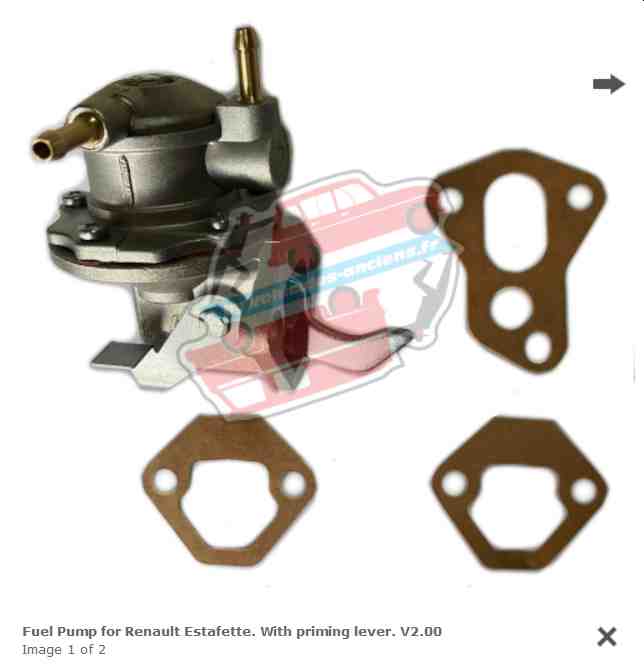
Water Pump
The water pump has a dynamic thermocouple sealing –
if water escapes, then usually the slip ring is rusted.
When the bearings run rough, you can tell by the sound of it. Or one removes the V-belt and turning the Puley by hand.
When I removed the Pouley flange, the ring broke, but a fellow clubmate – who also keep broken things – helped me out with an old pump.
The disassembly with the press is not a problem.
The slipping-ring can be peeled off after removing a safety ring. After cleaning with the metal brush, I sanded the slipping-ring on a flat surface with a fine sanding paper (at the end with a polishing paper). The sslipping ring is hardened, so it needs a bit patience.
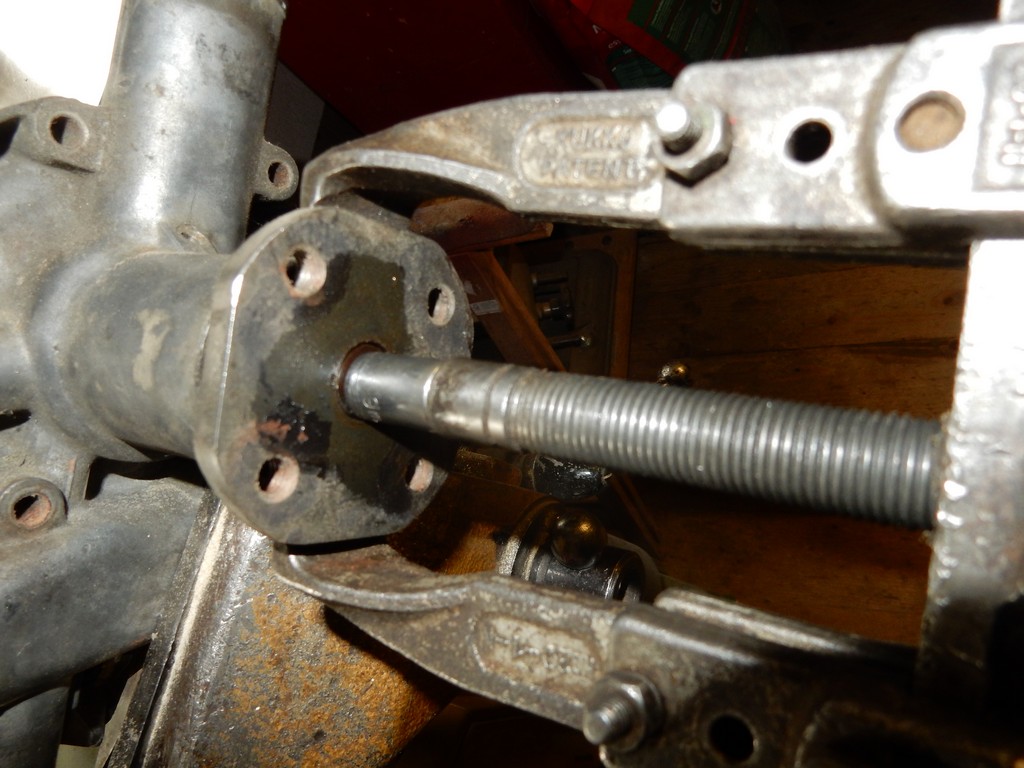
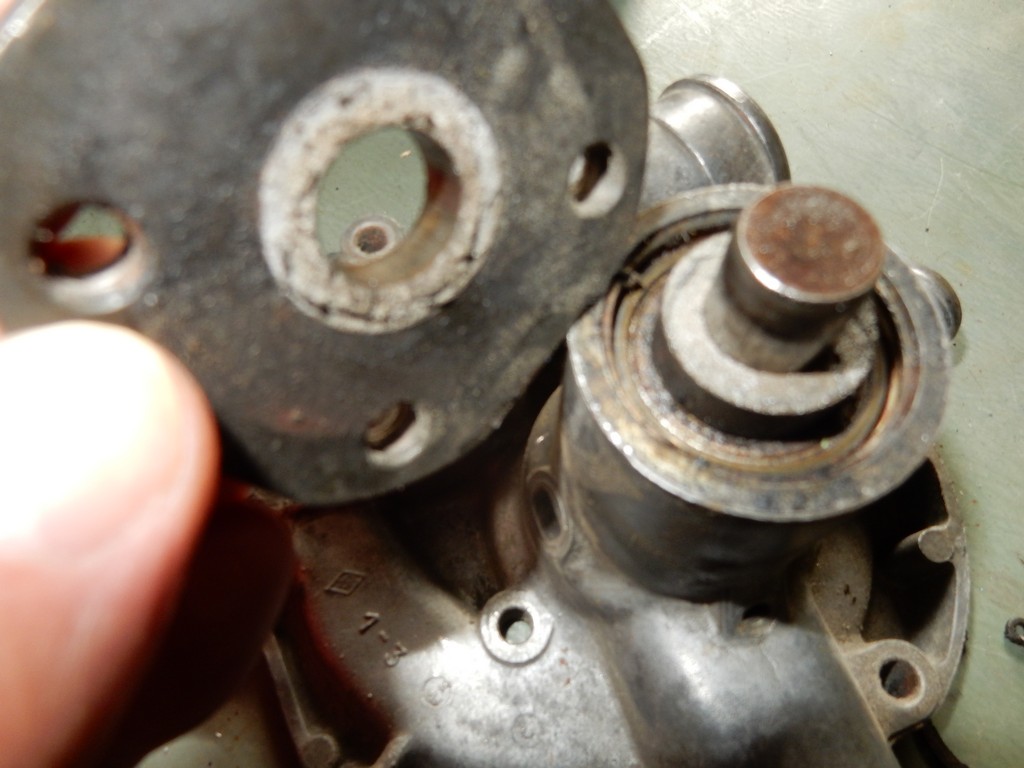
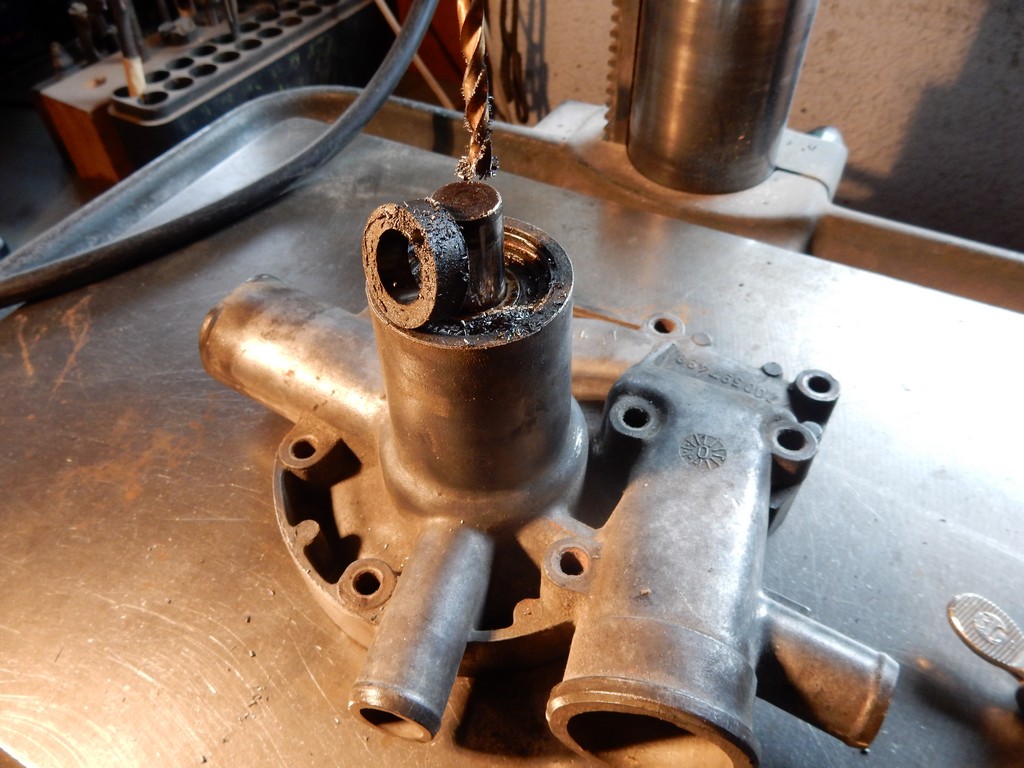

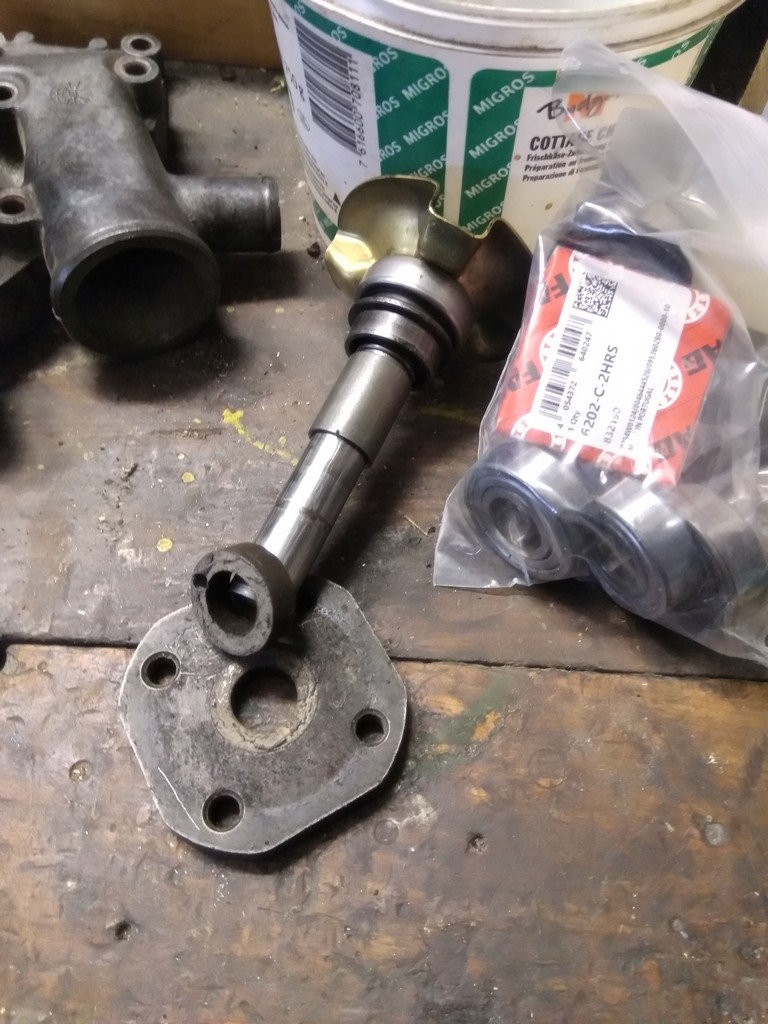
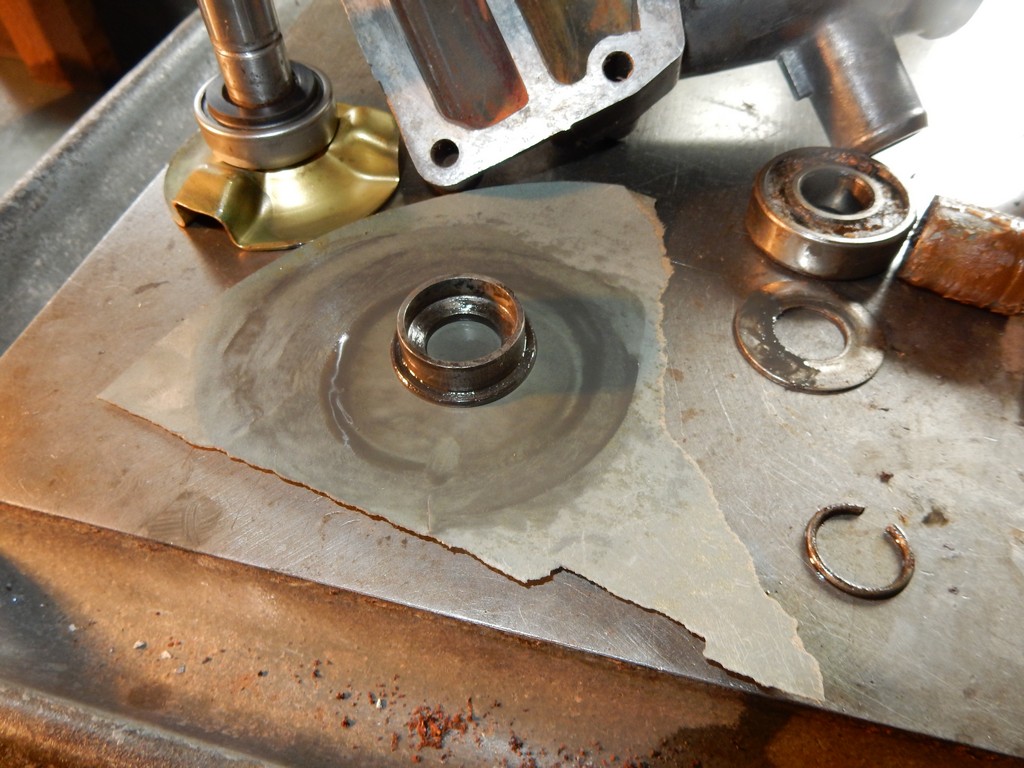
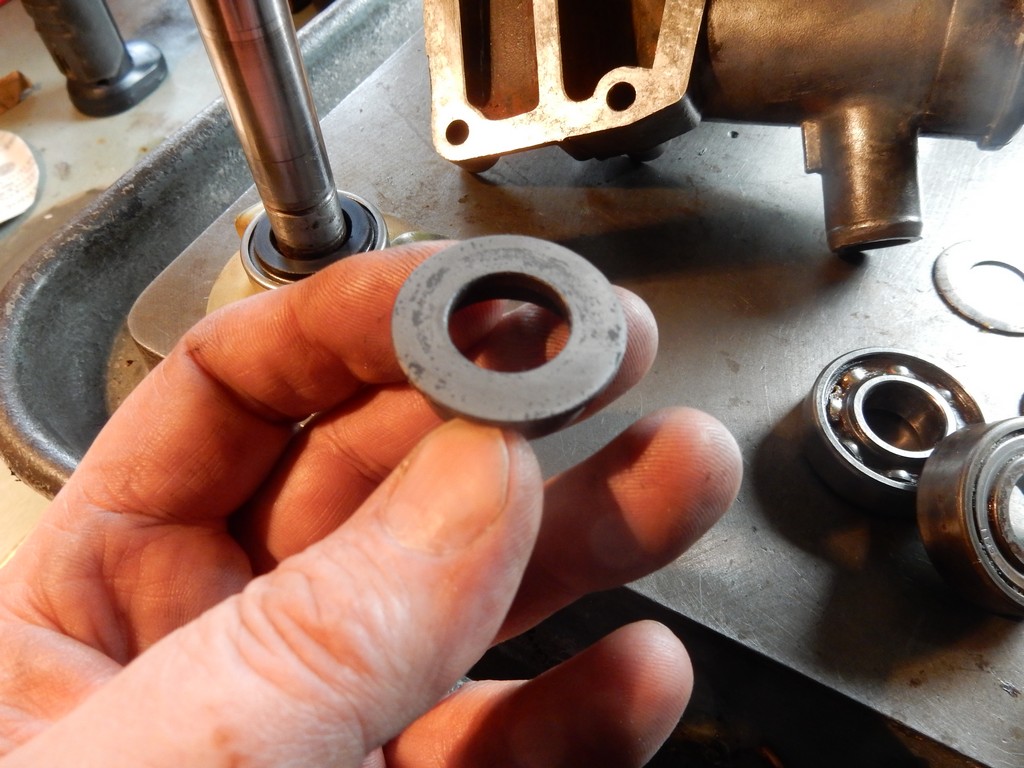
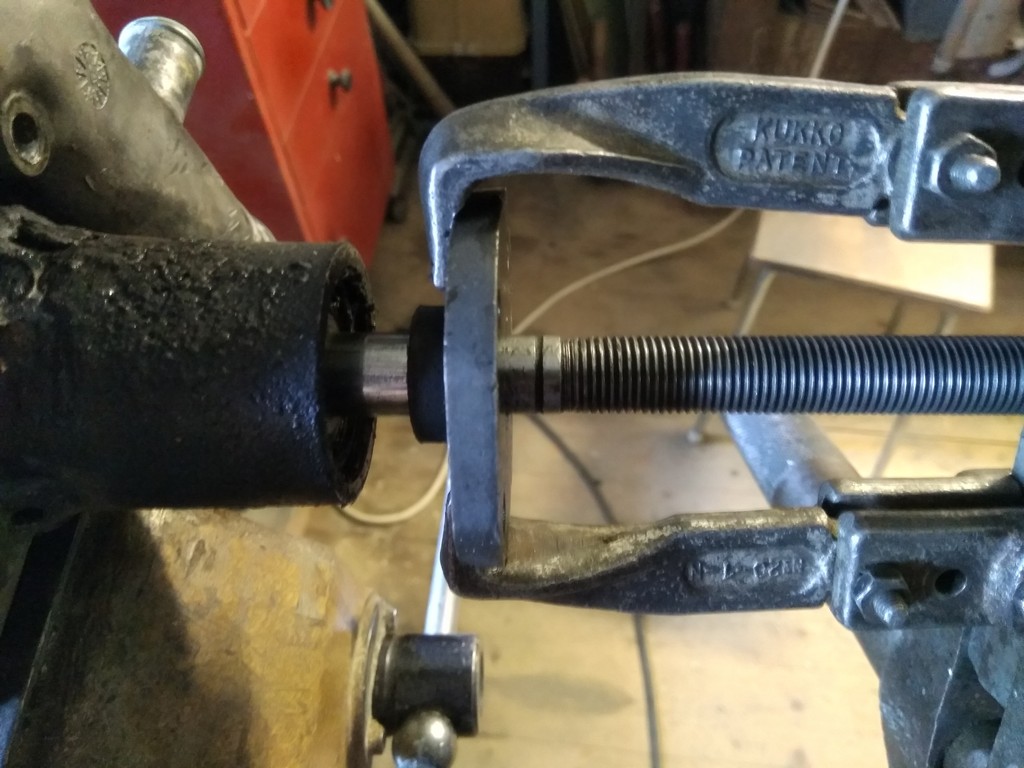
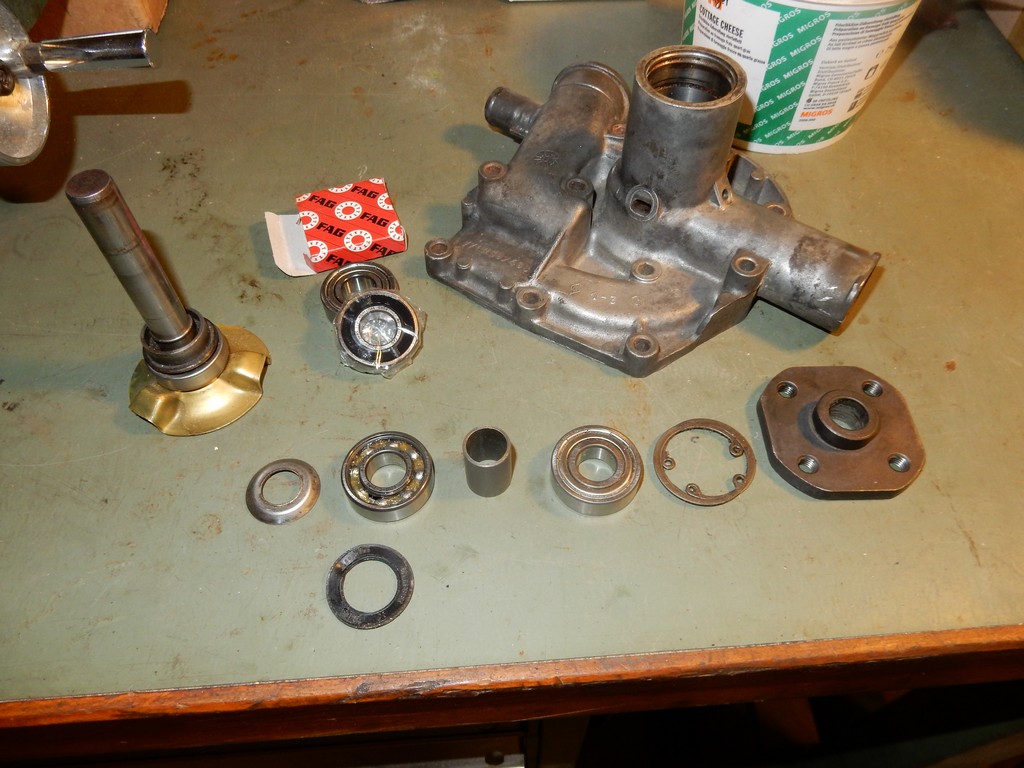
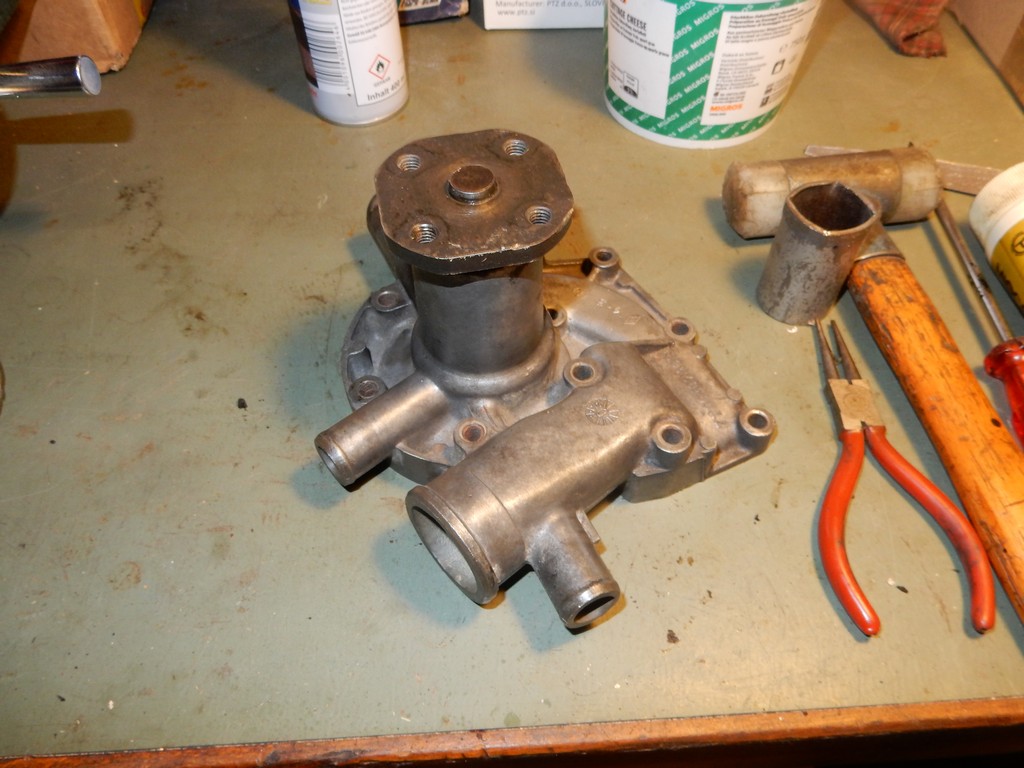
When assembling one have to be careful in what order it is done. It’s best to press first the bearings into the alu housing and mount the shaft at the end. For the two bearings, I removed the sealing rings at the inward sides of the bearings and generously filled the cavities with grease. Since I had not demounted the fan and the thermocouple, now when i pressed in the slipping ring, the pressing load was going over the sealingring . (The removal of the brass fan and sealingring was too risky for me – and even this would have lead unwanted pressure on the sealingring.
While pressing the shaft in, I made sure the sealingring surface was firmly close against the slip ring.
Finally the sealingring seems not to be damaged and the pump shaft turns smoothly.
Hope it will be thight … 🙂